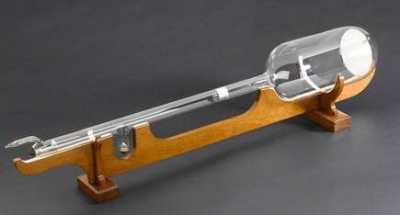
The Nobel Prize, which is awarded to those who “have conferred the greatest benefit to humankind”, is presented across a number of categories. Even though it recognises specific work done by people, the individuals receiving it more often than not make telling impressions in other ways too.
Take the case of Karl Ferdinand Braun, for instance. A German electrical engineer, Braun was a winner of the Nobel Prize. While he shared the 1909 Nobel Prize in Physics with Italian inventor Guglielmo Marconi “in recognition of their contributions to the development of wireless telegraphy”, he contributed handsomely in other fields as well.
First big contribution
Born in 1850 at Fulda, where he was educated, Braun showed an early aptitude for mathematics. While his name is a homophone of brawn, a word that means physical strength, Braun had less to do with that and more to do with his brains. After studying at the Universities of Marburg and Berlin, Braun graduated in 1872. Along the way, he started focussing on physics.
He didn’t have to wait for long to make his first big contribution as he discovered the point-contact rectifier effect in 1874. The unipolar conduction (current flows freely only in one direction) of metal semi-conductor junctions that he discovered is even seen by many as the beginning of solid-state electronics.
Teaching career
Between his 1874 discovery and his invention of cathode-ray tube in 1897, Braun moved from strength to strength in his teaching career. Having started out as a teacher at a Gymnasium (school) in Leipzig, Braun went on to teach Physics at Marburg, Strasbourg, Karlsruhe and Tubingen in a little over 10 years. He returned to Strasbourg in 1895 as principal of the Physics Institute and remained there, even though he got other offers as well.
Braun’s invention of the cathode-ray tube, also known as the Braun’s tube, in 1897 built on the research done by fellow German physicist Heinrich Geissler and British chemist William Crookes. In order to study high-frequency, alternating-current electricity, Braun came up with the tube that now bears his name.
Short and slick paper
By removing air from a glass tube that contained an anode and a cathode, rays were emitted from the cathode on application of a voltage to both electrodes. Braun then found out not only how to focus these rays such that they struck a phosphor-coated screen on the opposite side, but also how to change the beam’s direction by placing an electromagnetic coil near the neck of the tube.
In a short, slick paper that was published in Annalen der Physik (one of the oldest scientific journals on physics now) on February 15, 1897, Braun clearly described the design and realisation of his tube. He didn’t stop there though, for, he also presented its application as an oscilloscope.
Recalls in Nobel Lecture
Braun dedicated his later years to research pertaining to radio and telegraphy, and it was his work in this field that eventually led to him winning the Nobel Prize. He didn’t forget his past though, as he recalled his invention in the following manner in his Nobel Lecture in 1909: “…I might perhaps recall an accessory which was of great use to me and other experimenters. I mean the cathode-ray tube which I described in 1897”.
While Braun died in 1918, the concept of using an electron beam for generating an image on a screen was made into a practical television system years later. In the middle and late 20th Century, TVs and other electronic display units with picture tubes based on Braun’s cathode-ray tube became commonplace everywhere. It stayed that way until they met their demise early in the 21st Century, when they were eventually replaced by other technologies.
Picture Credit : Google

